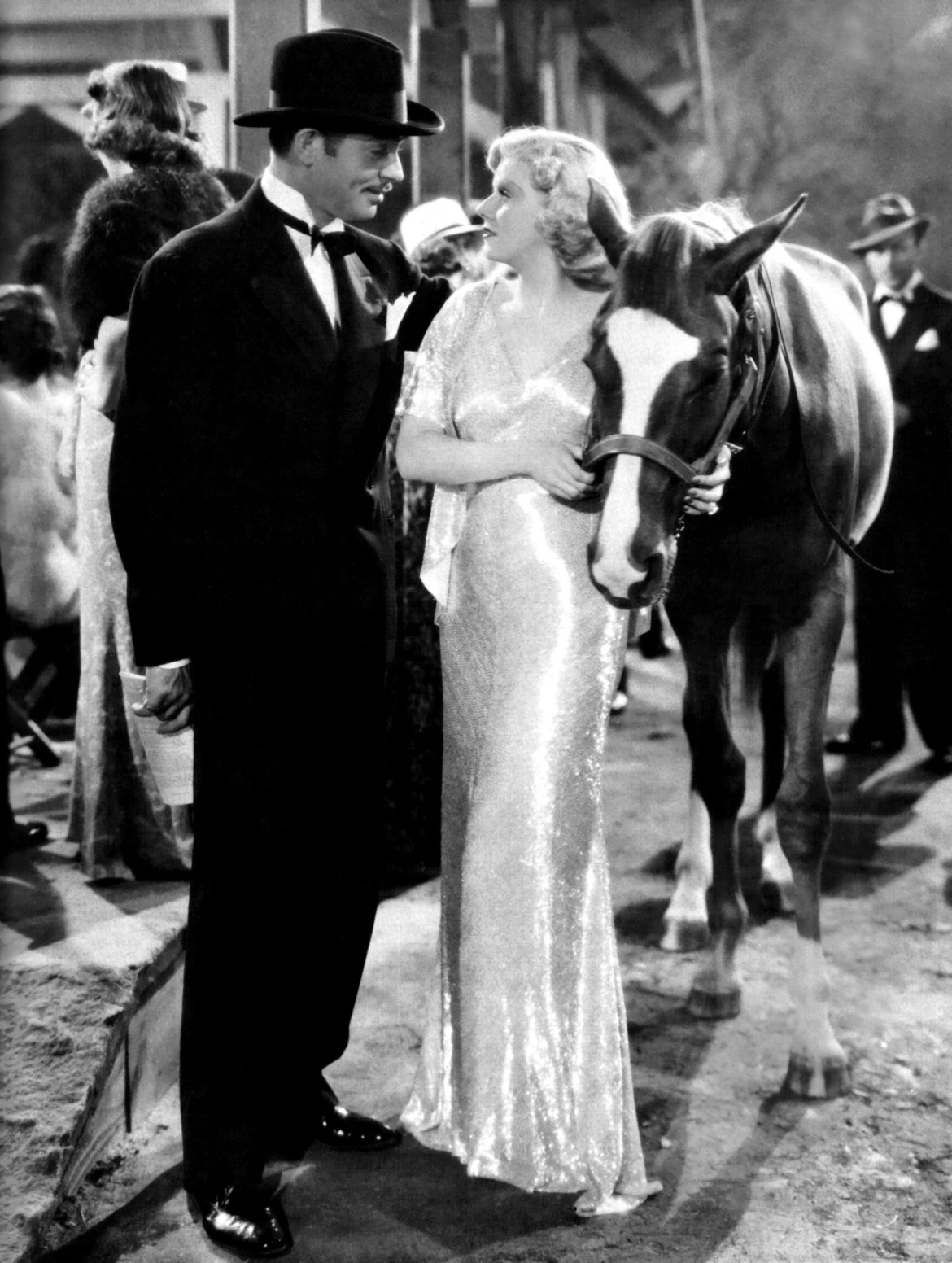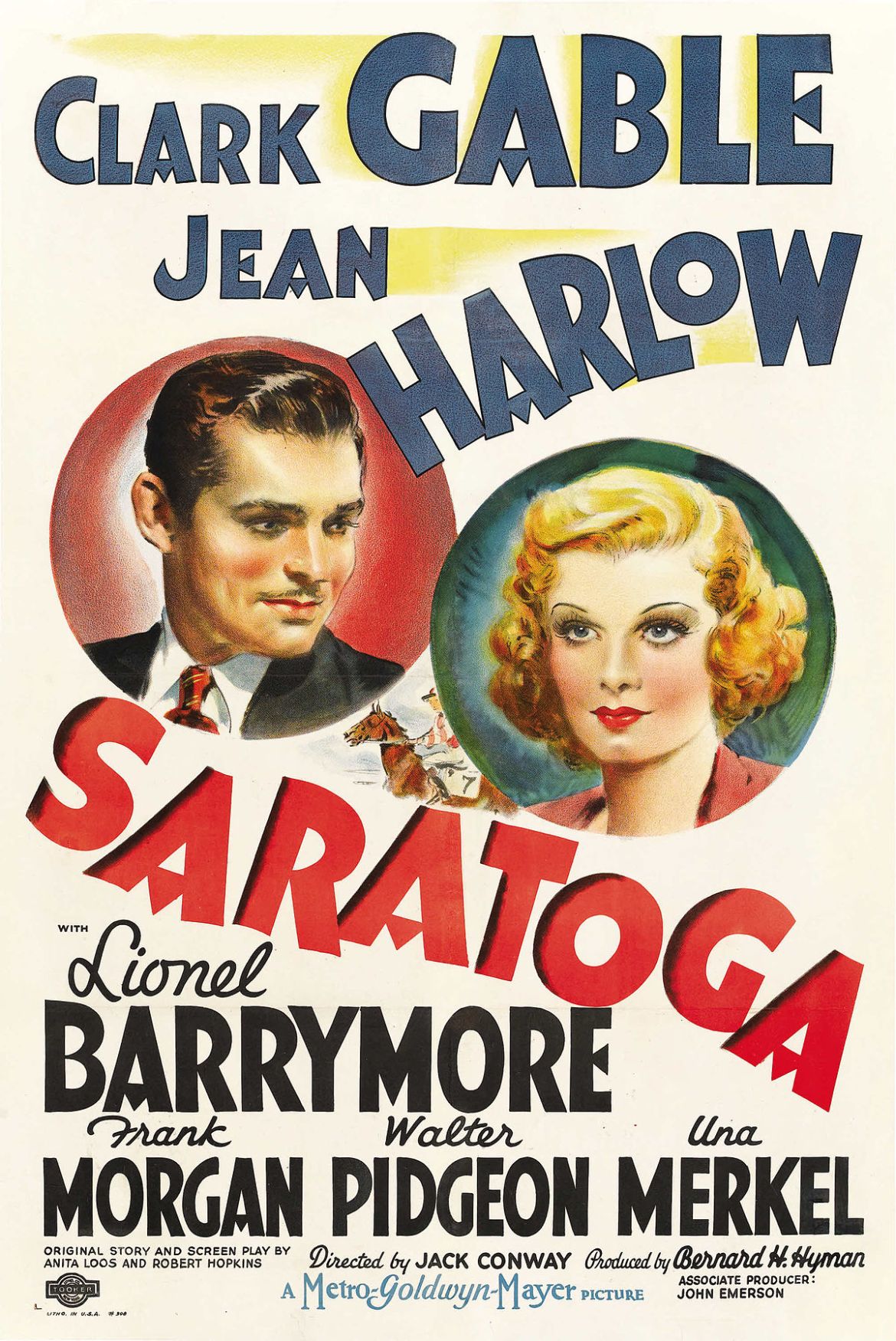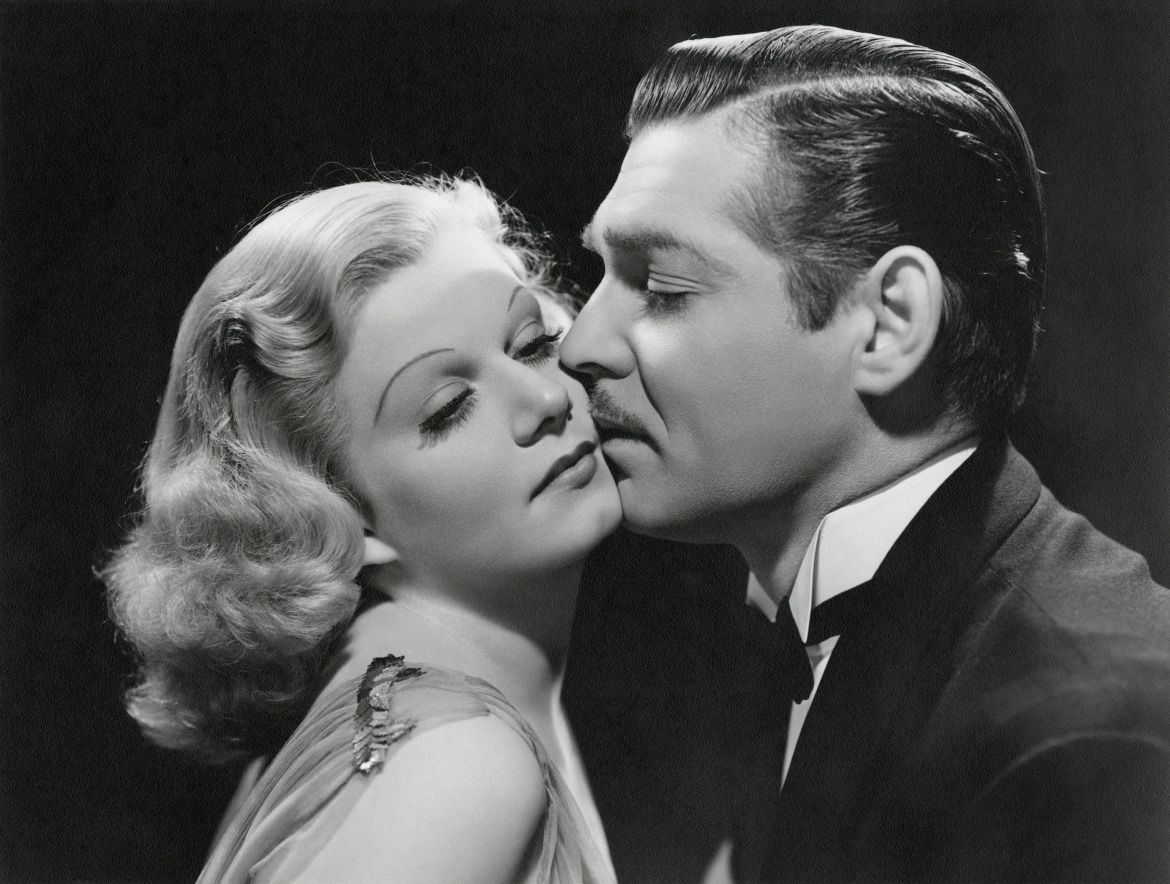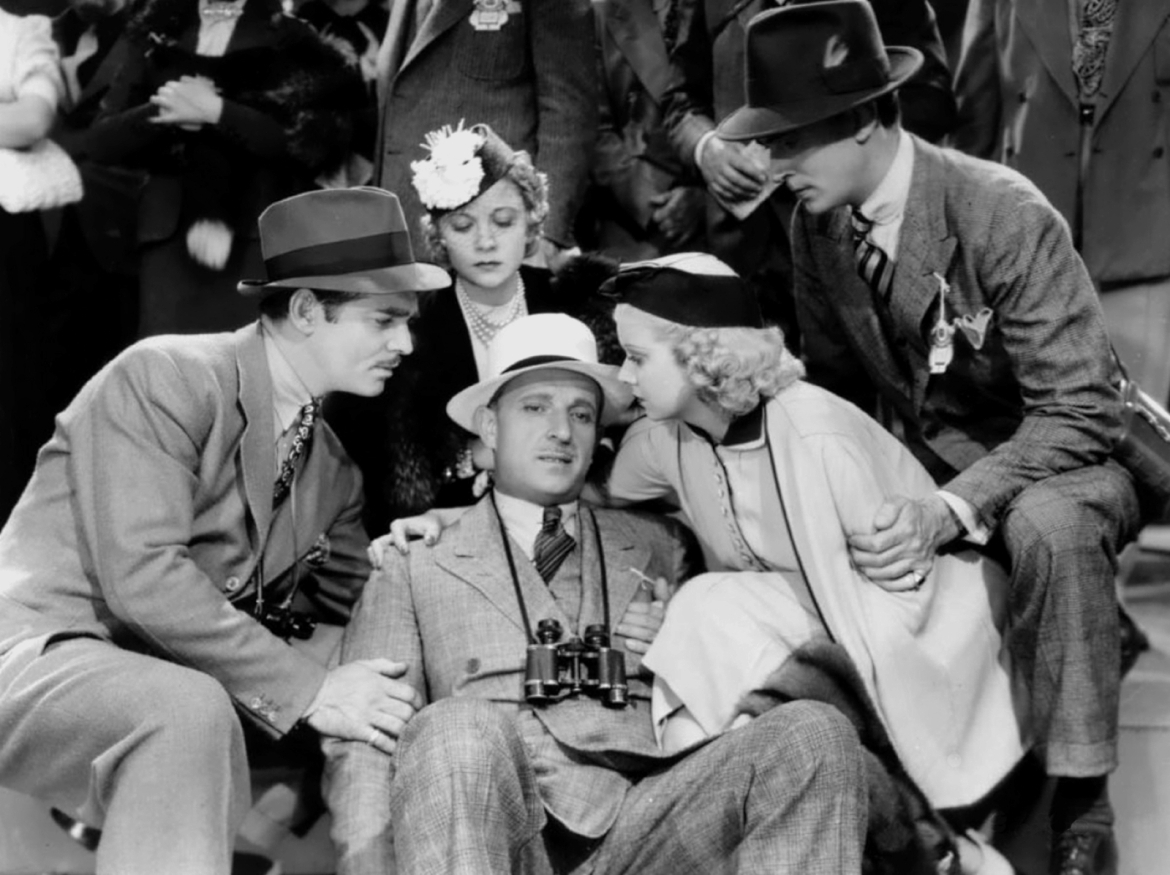We enter the last stage of Jean Harlow’s career this week with our look at Saratoga, the actress’ final film. The romantic comedy sees her once again partnered with Clark Gable set to the background of horse racing. How does the film fit in the pantheon of Harlow’s filmography?
Saratoga follows Harlow as a woman struggling to organize her recently deceased father’s affairs. However, things are complicated by the fact the man was a heavy gambler, absolutely riddled with debts. She butts heads with an old family friend and bookmaker (Clark Gable) who actually holds the deed to her family’s horse farm. Frank Morgan, Hattie McDaniel, Una Merkel, Lionel Barrymore and a very young Walter Pidgeon co-star. Jack Conway directs the film from a script by Anita Loos and Robert E. Hopkins.

The film stands as the sixth pairing between Harlow and Clark Gable. In fact, her work with the iconic A-lister is some of the best in Harlow’s filmography (particularly 1932’s Red Dust). Ultimately, Saratoga doesn’t feel like a typical Gable/Harlow pairing. Their earlier films demonstrate a chemistry which is largely absent in this movie.
While Gable is his usual self, Harlow is playing the more sophisticated character she tended towards in her later films. As a result, for much of the movie she’s holding herself above Gable’s Duke. This is in contrast with their earlier roles where the two play off each other with noted equity. Interestingly, this is also a rare film where Harlow’s character is the lone female point in the love triangle (usually Gable is torn between two women). In Saratoga, the two sides of Harlow’s star persona are represented by the men she’s torn between. Gable is the Pre-Code Harlow, rough, brassy and the relatable neighborhood kid from next door. Meanwhile, Walter Pidgeon is the what the Production Code Harlow is trying to be, elegant, sophisticated and European. In her overt conflict with Gable throughout the film, this feels like a personification of the battle between the two Harlow’s.

Tonally, the film feels like a light (fairly standard) comedy from this era at MGM. It’s not bad by any stretch. However, there is an inherent level of disappointment in that Saratoga pales in comparison to Red Dust and even China Seas as a Gable and Harlow vehicle. They’ve been so captivating on-screen together, that this film feels decidedly average.
Historically however, Saratoga is important as Harlow’s final film. The twenty-six year old actress collapsed, reportedly 2/3 of the way through filming. According to her New York Times obituary, she as ill less than a week before succumbing to kidney disease on June 7, 1937.
With parts of the film still to shoot, filming continued after Harlow’s passing. To cover her absence, a body double was used (reportedly actress Mary Dees) with voice actress Paula Winslow reportedly doubling Harlow’s voice. The scenes begin to appear roughly 1 hour into the 90 minute film and are interspersed with scenes involving Harlow. They feel jarring when viewed through a contemporary lens, as it is clear Dees is attempting to hide that this isn’t Harlow. Sometimes her back is to the camera as she has a conversation with one of the male leads, sometimes she wears elaborate hats, and sometimes she obscures her face behind binoculars. The scenes stand out in comparison to the scenes Harlow shot before her passing.

However, it doesn’t seem that the doubling did anything to dissuade period audiences. The film opened.in summer 1937, and was a smash-hit of the year. Critics seem a bit cooler to the film, with the New York Times calling Harlow “not her tempestuous self”.
Harlow’s health had been questionable for the year before. Sources ranging from IMDB to Karina Longworth’s podcast “You Must Remember This” describe the actress having difficulty for much of 1936. Ultimately, her health is visible in this film. She’s not her “tempestuous self” because she was struggling with the illness that would eventually end her life. As you watch the film, you can see her struggles (particularly in her eyes). They are struggling to cover dark circles, and ultimately something isn’t quite right. By this point, the actress seems much oldered from the twenty-one year old in Red-Headed Woman.

Could her health struggles be at least partially responsible for Harlow’s shift in persona towards the end of her career? That is difficult to gauge accurately without more research. However, it would seem difficult to maintain the level of star power she held early in her career in the throes of such a substantial health crisis.
Ultimately, Saratoga is an average movie thrust into a position of importance. It is only in the fact that this is Jean Harlow’s last film which keeps this movie relevant in film history circles. Both she and Gable did better work, and if you are looking for an example of both at their peak, check out their work in Red Dust. They don’t get much better. This film stands as a tragic entry, as we see the effects of her decline ravaging Harlow in this film, and when viewed in hindsight, it is prevalent on-screen.
FOLLOW US ON: FACEBOOK, TWITTER
